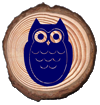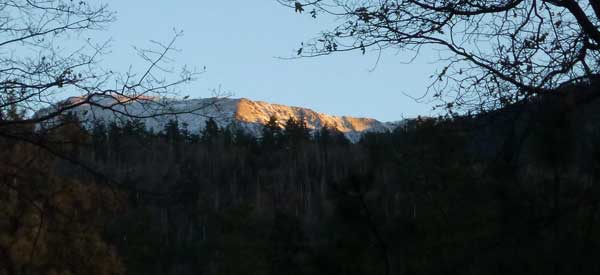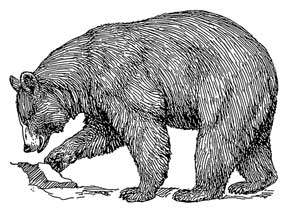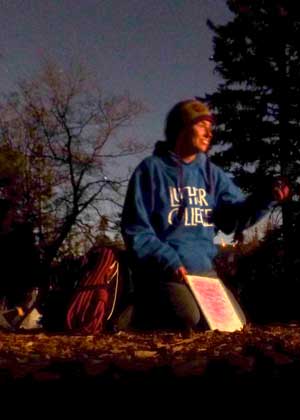 “All right, ladies, what do you know about animals active in the night”?
“All right, ladies, what do you know about animals active in the night”?
I ask this question to begin a class taught after sunset. The class, Nocturnal Nation, is designed to empower students to begin overcoming fears of the night by learning more about it.
By the end of class, my students are able to review adaptations in nocturnal animals and how these differ for diurnal animals, but when I ask leading questions toward crepuscular, I inevitably receive confused stares from everyone.

Nocturnal and Diurnal Patterns
Animals often choose particular times of the day to be active – as an animal repeats the period of being awake and active over time, it creates an activity pattern. Biologists track these activity patterns, using them to categorize animals and better understand ecosystems. There are three vocabulary words at the heart of this concept that describe patterns of activity for animals.
Animals, including humans, who are active in the daylight hours between dawn and dusk, are called diurnal. An opposite activity pattern, active during the night, is called nocturnal. A third pattern is crepuscular.

Sunset is Crepuscular Time!
The Crepuscular Pattern

I am crepuscular in the spring and fall, nocturnal in the summer, and I sleep a lot in the winter.
Scientists use the word crepuscular (derived from Latin crepusculum meaning twilight) to categorize animals following a slightly more complex activity pattern. Crepuscular animals are at their peak activity at the twilight hours of dawn and dusk. In cities, crepuscular animals are uncommon, but they still make up a portion of the urban food web.
Many bats are crepuscular either keeping insect populations under control or helping plants reproduce. 1 In Southern California, there are nineteen species of bat! 2 These bats and other crepuscular animals find early morning and evening to be comfortable times of day to be awake and active.
Crepuscular animals are at their peak activity at the twilight hours of dawn and dusk.

Two crepuscular creatures, one feeding upon the other.
Globally, concentrations of crepuscular animals occur in only a few locations. One of the world’s highest concentrations of crepuscular animals live in southern Africa, India, and China. 3
Outside of developed areas in Southern California, biologists have identified over thirty-three species of crepuscular mammals. 4 5
Among reptiles, snakes are the most crepuscular (four species) while amphibians are rarely crepuscular. 6 An unknown number of native Southern Californian insects, including mosquitoes and moths, are crepuscular.
Benefits of being Crepuscular
An adaptation is some characteristic an organism uses to survive. Whether animals live in developed urban regions or in undeveloped deserts, mountains, or scrubland, being crepuscular is an adaptation.
In environments like the arid San Bernardino Mountains, temperatures can swing between 80˚F during the day and 30˚F during the night. Desert areas can provide an even larger swing, called a diurnal temperature fluctuation. For many animals, such as snakes, cats, and rabbits, dusk and dawn provide a comfortable temperature between the extremes of day and night in which to hunt and forage.
The vision of many crepuscular animals is adapted for low light levels. For example, a mountain lion’s eyes are large with more rods than cones which allows this cat to see details in very low light. Low light also helps crepuscular animals such as mule deer hide from predators.

 My Nocturnal Nation class closes with the opportunity to walk a short distance in the woods without a flashlight. Having accomplished this feat, my students know that the night is not scary, and in fact is filled with interesting animals.
My Nocturnal Nation class closes with the opportunity to walk a short distance in the woods without a flashlight. Having accomplished this feat, my students know that the night is not scary, and in fact is filled with interesting animals.
They leave class with a heightened appreciation for the environment around them, understanding that Southern California’s unique environments of desert and mountains hide one of the largest concentrations of crepuscular animals. Instead of moving on, often my students simply want to explore further. Want to join?
At High Trails Outdoor Science School, we literally force our instructors to write about elementary outdoor education, teaching outside, learning outside, our dirty classroom (the forest…gosh), environmental science, outdoor science, and all other tree hugging student and kid loving things that keep us engaged, passionate, driven, loving our job, digging our life, and spreading the word to anyone whose attention we can hold for long enough to actually make it through reading this entire sentence. Whew…. www.dirtyclassroom.com

Take a close look and you’ll see the Big Bear area and the San Bernardino National Forest way at the bottom of the map. We’re in this “extreme range of temperature” zone, creating a need for animals to come out at dawn and dusk…the crepuscular time!
- http://news.bbc.co.uk/earth/hi/earth_news/newsid_9125000/9125617.stm ↩
- http://www.mammalsociety.org/mammals-california ↩
- http://www.pnas.org/content/111/38/13727.full ↩
- http://www.mammalsociety.org/mammals-california ↩
- http://www.californiaherps.com/identification/socalherps.html ↩
- http://www.californiaherps.com/identification/socalherps.html ↩

Comments are closed.